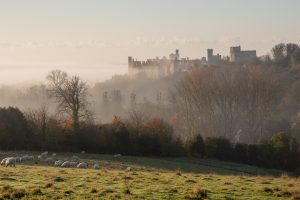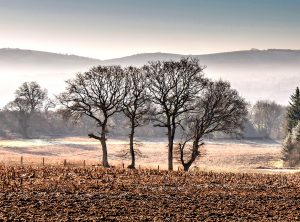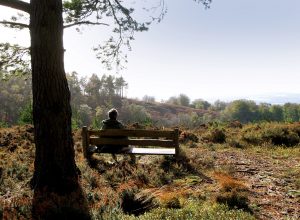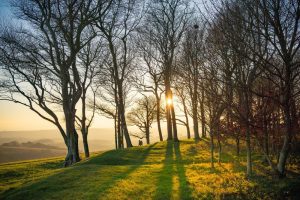Best Autumn walks in West Sussex
September 27, 2023
The South Downs is a beautiful place to explore at any time of the year, but there’s something really special about enjoying a walk in the countryside in the autumn, with misty mornings and the crunch of frosted fallen leaves under your feet.
A rich diversity of landscape areas exist across West Sussex.
The distinctive Wealden Greensand ridge, formed from deposited sands and clays when this part of Britain was under the sea, shares the same sloping landform as the chalk hills.
River valleys support wetland habitats and wildlife.
Lowland heaths provide shelter and breeding grounds for reptiles and heathland insects.
Ancient woodlands, beech plantations and mystical yew groves offer secluded habitats for specialist species. It’s these woodlands that make these walks in West Sussex a sensory delight in the Autumn.
Here are a few of our favourites.
Arundel and South Stoke Circular – 7 miles

Photo credit: Jamie Fielding
With it’s fairytale castle and abundance of cafes and traditional pubs, Arundel is the perfect location for an Autumn day out.
Nestling in the Arun Valley north of Arundel you’ll find the peaceful village of South Stoke. Surrounded by beautiful walking country, St Leonard’s Church acts as a centerpiece to the village which sits on the west bank of the River Arun.
With a train station nearby, you can choose to leave the car at home.
Check out the full walk with directions.
Rogate – 8 miles

Photo credit: John Richardson
Explore patchwork fields, peaceful villages and the scenic River Rother.
Beginning from the village shop in Rogate, a charming village in the Western Rother Valley, this walks takes in part of the Serpent Trail, the 64 mile long route which winds it way through the stunning heathlands of the South Downs.
When you reach the banks of the River Rother, tread quietly and you might be able to spot kingfishers and herons on the banks. In more recent years, otters have returned to the Rother, a sign of improving health for a river previously neglected.
Filled with wooded paths, the ochre’s and crimsons blend with the green downland and the shimmering river to create an ethereal experience on this walk.
Check out the full walk with directions.
Haslemere to Fernhurst Circular – 9 miles

Starting in the very northern tip of the South Downs National Park at Haslemere, this circular route takes walkers to the highest point of the National Park at Black Down.
At 280 meters, Black Down looms over the Low Weald of West Sussex. From this height, all the colours of Autumn become visible below, where woodland wraps itself around river valleys and tranquil villages.
Friendly Belted Galloway cattle graze the slopes, keeping back scrub that would otherwise begin to dominate and black out the heather, a plant characteristic of the greensand ridges of which Black Down is geologically part of.
The route also takes in a chunk of our industrial past at Fernhurst Furance. In the 17th and 18th centuries, the iron industry flourished here, using local ore, charcoal and water to power the works.
Check out the full walk with directions.
Chanctonbury Ring and Cissbury Ring – 9 miles

Photo credit: Tim Kahane
This walk begins at the May Tree Avenue bus stop in the Findon Valley, between Findon village and Worthing on the A24.
From here, follow signs towards the Cissbury Ring car park on Storrington Rise and take the path to the Cissbury ramparts.
The largest hill fort in Sussex, Cissbury Ring has a history dating back over 5,000 years. Set high up on a chalk promontory, its ditch and ramparts enclose roughly 65 acres.
From the top on a clear day you can see for miles, with views to the chalk cliffs of the Seven Sisters beyond Brighton and as far as the Isle of Wight.
Once you reach Chanctonbury Ring you will see the beech trees which dominate the site. Originally planted in 1760 by Charles Goring, heir to the large Wiston Estate, the trees were casualties of the storm of 1987, with replanting happening soon after.
When here, stop and take in views of the low Weald, seeing the crimsons, golds and browns of trees losing their leaves at the turn of the season.
